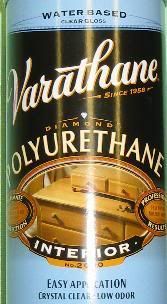
The Apple Barrel Gloss Acrylic did the trick on the playfield, and matched the black color and sheen really well. I found that it's a good idea not to use to much of it; just fill in the missing color with as little paint as possible. Otherwise, the added paint will raise the elevation of the playfield in that spot, which is moderately visible. The clearcoating will ensure a completely flat surface in any case; minimizing the paint used merely helps with aesthetics.
So the touchups were completed for each of the colors: flesh, gold, white, blue, and black, and the result looked pretty good. But because of thge age of the machine, its playfield inserts (the colored plastic pieces in the playfield that sit over lamps to provide animated color) had shifted and warped over time, due to both game play, and the heat of the lamps. I used a hair dryer to gently melt the insert glue from the bottom of the playfield, and then gently pressed them out. Most of them were "cupped", shaped like a shallow bowl, instead of being completely flat. I like to sand them flat (which takes off any ink present as well, e.g., "Bonus", "2x When Lit", etc.), and then reinsert them level with the playfield. After clearing the area with a little alcohol to dissolve the excess glue, I apply a clear water slide decal with the original insert art. Sometimes these decals can be bought on the secondary market, but more often, I just make my own, using the scans I make before cleaning the playfield.
After the touchups had been made, and the decals applied, it was time to start clearcoating the playfield. I protected the open holes by stuffing in little pieces of tissue paper (the lamp sockets, switch troughs, etc.). Then I applied the first even coat of Varathane Diamond spray. This is a water-based polyurethane coating that won't discolor over time, and will provide a very flat and hard protective surface to the playfield.
But it takes time. I like to apply an initial thin coat, making sure it's applied evenly. After an hour or so, I apply a second thicker coat. I make this coat thick enough so that the surface tension of the wet coating is strong enough to flow together, and self-level. You can see if you have enough applied by checking the reflection of a light source; the coating should look completely glossy and smooth, with no texture. If there is texture present, I spray some more.
Another couple of hours go by, and I repeat. Six to nine times (or about two or three cans of Varathane, depending on how uneven the surface is to start with). It's a waiting game, but the waiting's not over yet. After the coating is thick and flat enough, it needs to cure, ideally for a couple of weeks. I always wait for at least one week before working on the playfield again, and I don't play the game for at least two. That's all right, there's plenty to do in the meantime while I wait. The cabinet still needs to be repainted, and the circuit boards need a lot of repair.
No comments:
Post a Comment